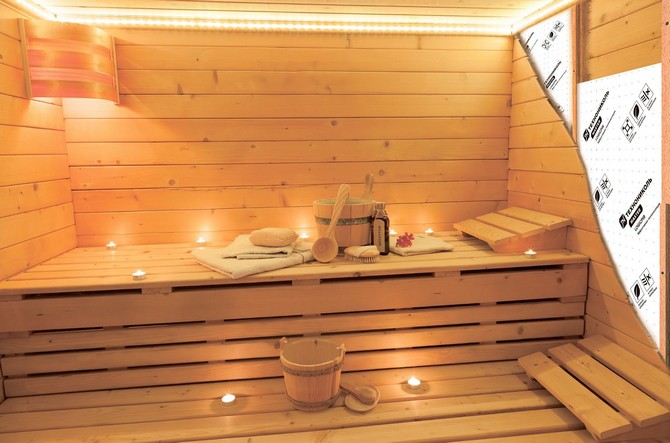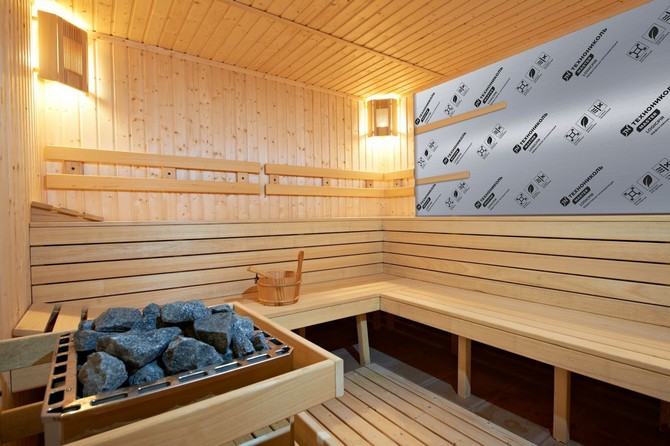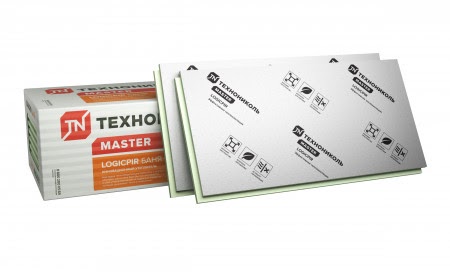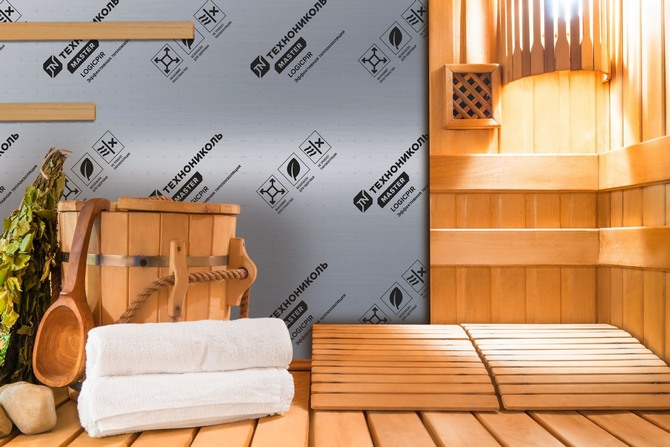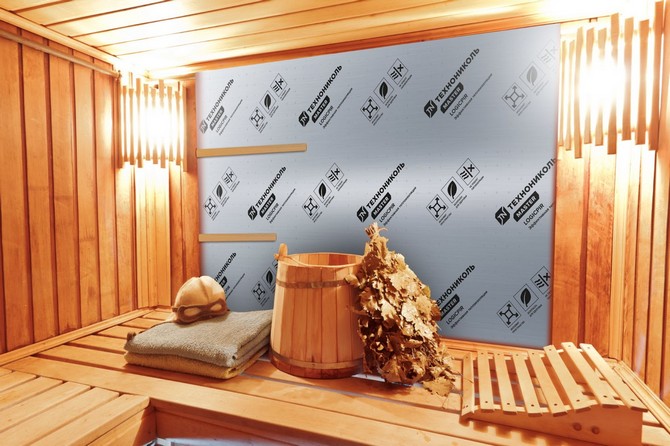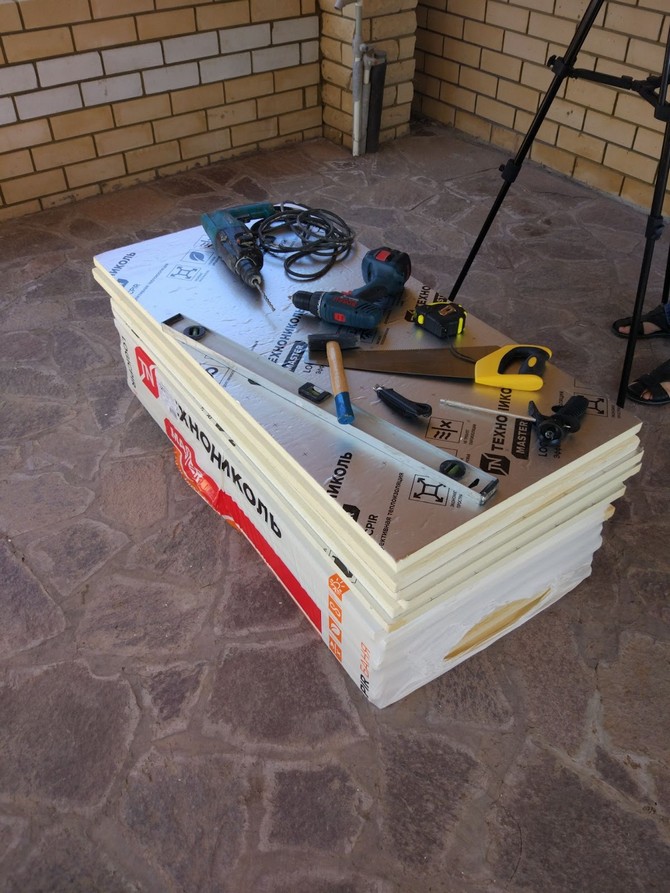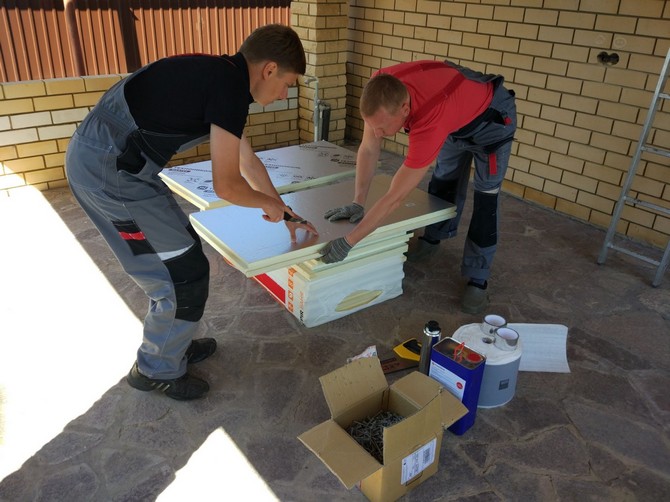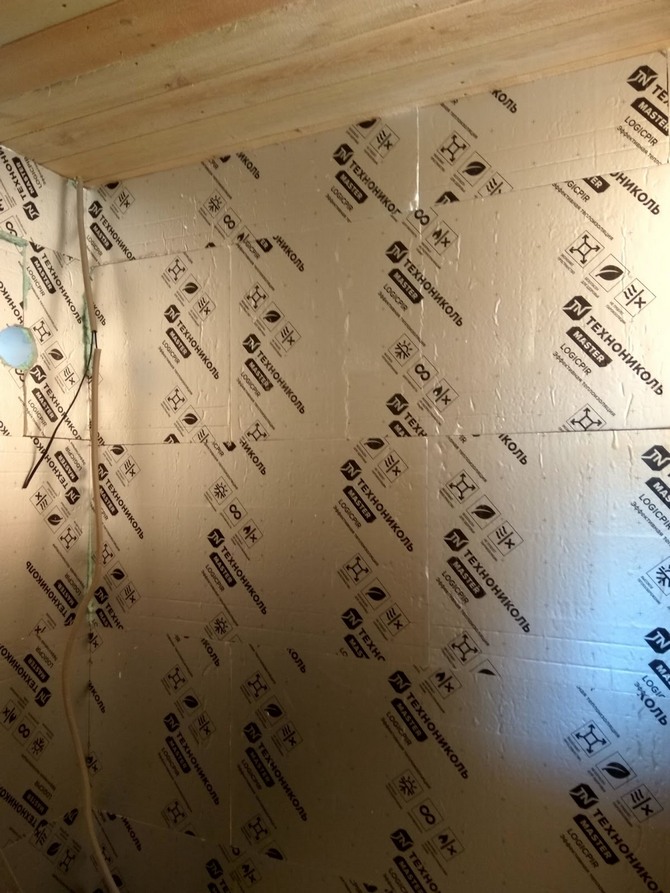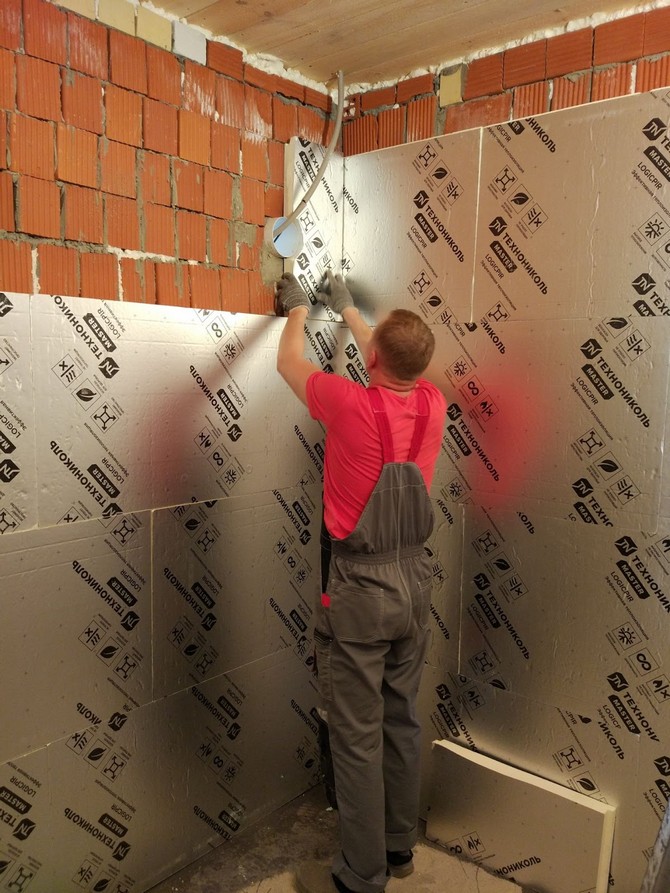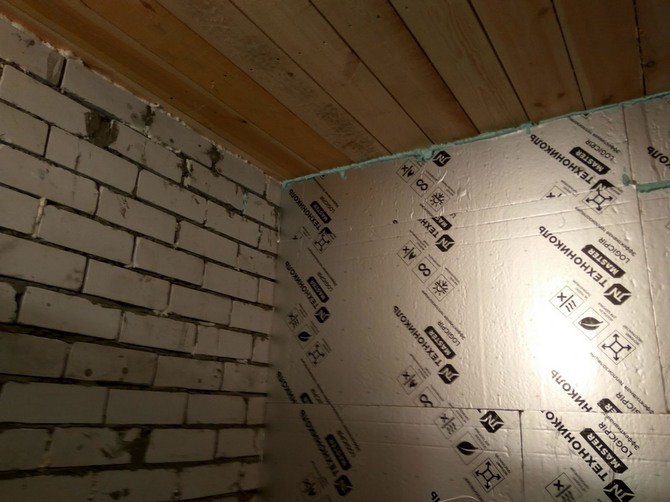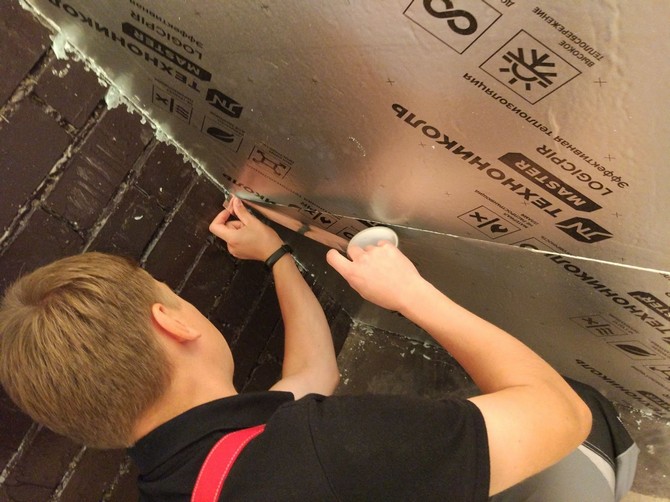How to choose insulation for a bathhouse - features of materials and which one will be better?
Most owners of country houses install a Russian bathhouse or sauna on their property.But in order for it to fulfill its functions and serve not only for water procedures, but also for healing, it is important to properly insulate it. Typically, the method is chosen at the design stage of the building. But you can insulate the bathhouse when it is ready. To carry out the work, you should familiarize yourself with the materials used for insulation, as well as the technology for their installation.
The content of the article:
- Why do you need thermal insulation in a bathhouse?
- Features of materials for thermal protection
- Materials for thermal insulation
- Which insulation is better for a brick, wooden and concrete bath
- LOGICPIR Bath from TECHNONICOL: product characteristics
- How to insulate the walls of a bathhouse using LOGICPIR slabs from TECHNONICOL
- Materials and tools for work
- Preparing bathhouse walls for installation of thermal insulation boards
- Installation of a thermal insulation layer using LOGICPIR Bathhouse slabs from TECHNONICOL
- Formation of a continuous thermal insulation circuit
- Additional waterproofing of the rooms of the bath complex
- Installation of decorative coating in a bathhouse
Why do you need thermal insulation in a bathhouse?
In any bathhouse, a boiler or stove is used for heating. But their work will be ineffective if insulation is not created. This is a required step. Even the low thermal conductivity of wood, from which such buildings are often built, does not allow for optimal thermal protection.
If the bathhouse is built from wall blocks, then the approach is slightly different. Create thermal protection both outside and inside. On the outside, a wooden cladding is usually formed, under which insulation is placed.In addition, you will additionally need to take care of insulating not only the walls, but also the ceiling, floor and even the foundation. Then it will be possible to achieve the desired “thermos” state.
Advantages of internal insulation
Well-insulated baths have a number of advantages:
- the room warms up faster and does not cool down for a long time;
- heat consumption is minimal;
- the ability to control humidity levels;
- heating costs are reduced as heat loss is reduced;
- the service life of the structure increases;
- the desired microclimate is achieved inside the bath complex;
- minimal risk of mold and mildew development.
But to achieve all this, it is important to choose thermal insulation materials.
Features of materials for thermal protection
A bathhouse is a room with high temperature and humidity. Therefore, ordinary materials will not work here.
In the steam room and washing room the air will always be humid. In the dressing room too. For insulation here, it is better to use not ordinary hygroscopic insulation, but options with hydro- and vapor barriers.
The temperature in the steam room can exceed 100 degrees. Foam or extruded polystyrene cannot be installed in this room, as when heated they release toxic substances that are harmful to health. That’s why plastic panels or linoleum in a steam room are taboo.
Part of the thermal energy at a constantly elevated temperature is lost in the process of heat exchange. To reduce these losses, it is worth using a material with a foil lining to insulate the bathhouse, or additionally provide for fixing a reflective layer of foil when developing a thermal insulation scheme.
Materials for thermal insulation
Thermal insulation material is the main component needed to insulate the walls, floor and ceiling of a bathhouse.There are many types of insulation, but not all of them can be used in rooms with high temperature and humidity. When choosing a specific option, they rely on its technical characteristics and operating conditions.
Expanded polystyrene
Expanded polystyrene is produced in accordance with GOST 15588-2014 (expanded polystyrene thermal insulation boards). The material has good thermal insulation characteristics, it is inexpensive and weighs little. But still, it is not used for internal insulation of baths due to the fact that it is capable of releasing toxic substances when heated. It is permissible to use the material for the external cladding of the dressing room.
Rigid polyurethane foam with foil lining
Rigid polyurethane foam is produced in accordance with GOST R 56590-2015 (EN 13165-2012). Unlike the sprayed version, it can be used to insulate the steam room and adjacent rooms. This is possible due to the presence of a foil lining. It prevents steam from penetrating into the enclosing structure and protects against overheating and fire.
LOGICPIR Bathhouse from TECHNONICOL is one of the most reliable materials that is used to insulate a bathhouse built from any material, as it is an improved modification of polyurethane - PIR. Even a person with minimal knowledge in the field of construction can cope with the installation. Thanks to its technical characteristics, the LOGICPIR Bath fully fulfills its functions - it does not allow steam to pass through and reflects heat. As a result, the desired temperature regime is maintained in the bathhouse for a long time.
Glass wool
The basis of the material is intertwined threads of inorganic glass. This causes the formation of air layers and pockets inside the material, which prevent heat from escaping through the insulation.Glass wool is produced in accordance with GOST 19170-2001.
The material is sold in the form of rolls or plates. The choice of a particular type depends on many factors, including the area of the room and the person’s skills in construction.
Glass wool insulation work is carried out wearing protective clothing. This material is rarely used for thermal insulation of baths or saunas, as it reacts poorly to moisture penetration. This means that you need to create 1 more foil layer to insulate it.
Glass wool is suitable for insulating a building from the outside. It is mainly used for thermal insulation of the roof or attic.
Expanded clay
Eco-friendly, fireproof and durable material. It is rarely used for wall insulation, since to ensure the required level of thermal insulation, expanded clay will be required 4 times more (a layer of at least 50 cm) than other materials.
Jute felt
This material is called interventional. It is of natural origin, as it is produced from the fibers of the jute plant. The material has good thermal insulation properties and is able to remove excess moisture.
The jute felt itself is not strong in structure, but hard. To enhance its properties, flax fibers are often added to the composition. It goes on sale in the form of tape reels.
Which insulation is better for a brick, wooden and concrete bath
Before choosing insulation for a bathhouse, it is important to consider what material it is built from. Since depending on this, the installation technology may differ.
From timber
If the bathhouse was built from durable wood with a small cross-section of each element of the frame, then it will be enough to caulk the cracks well and go over the walls with impregnation against microorganisms and fungus.Treatment with moisture-proofing and fire-fighting compounds will also not be amiss.
Internal insulation of rooms can be done using basalt wool (“Pie” technology). But then you will need to additionally lay a layer of foil material. Therefore, the best option is LOGICPIR Bathhouse from TECHNONICOL. Here, polyisocyanurate foam boards with a closed cell structure already have a foil lining.
Made of brick
Brick walls freeze quickly in winter. To maintain the microclimate inside the bathhouse, you should carefully plan the insulation scheme. There are two options here - either install second walls around the perimeter (with the installation of insulation) of the bathhouse complex, or make a double thermal insulation layer.
For the sheathing, you should use wood rather than metal, since the former gets very hot during the operation of the bathhouse. In addition, the entire structure is additionally treated with agents against mold and pathogenic microorganisms. Moisture-repellent and fireproof compounds are also used.
Made from concrete
Concrete baths are insulated from the outside and inside. This is necessary to avoid the masonry getting wet during operation. Fixing the insulation in this case is also an additional prevention of rapid destruction of the structure.
The internal surfaces of the walls are insulated using mineral wool or polyurethane foam with foil lining. The outside is formed according to the type of suspended ventilated façade. Sheets of mineral wool are also used here, but they are additionally sheathed with siding or clapboard.
Insulation of a wooden wall in a steam room
The process of insulating walls in a steam room is considered quite complex. Unlike mineral wool, wood reacts negatively to temperature changes.The vapor permeability of a wooden wall made of solid oak is 0.05 mg/m*h*Pa. This is twice as bad as a brick wall.
The outer layer of insulation must have moisture-proof properties. A ventilation gap is left between the wooden cladding of the steam room and the insulating heat-insulating surface. It is needed to level out some of the leaked water vapor.
Air and steam will rise along the vertical gap if the front layer in the insulation system heats them up. Therefore, the ideal option here is rigid LOGICPIR Bathhouse slabs from TECHNONICOL with a foil lining. The foil reflects about 90% of the heat and transfers it to steam and hot air. Due to zero vapor permeability, moisture will not penetrate into the “pie” of the enclosing structure and will not condense in it.
LOGICPIR Bath from TECHNONICOL: product characteristics
LOGICPIR Bathhouse from TECHNONICOL is an insulation material made from rigid polyisocyanurate foam with a closed cell structure. The top and bottom are covered with aluminum foil, which provides it with increased sound and heat insulation properties. The insulation is produced in Russia.
Main characteristics in the table.
Thanks to the special shape of the edge, LOGICPIR Bath slabs from TECHNONICOL fit tightly together, which minimizes the likelihood of gaps. For greater sealing, it is recommended to glue them along the seams with metallized tape.
Foil-coated PIR boards have high insulating properties, so they can be installed in both dry and wet areas. LOGICPIR Bath from TECHNONICOL is a material that is designed for installation in a steam room, dressing room and other rooms of bath complexes.
The material is durable. Its service life is more than 50 years.During this time, it does not lose its properties and does not require replacement or additional processing by any means.
A person with minimal knowledge in the field of construction can cope with the installation of LOGICPIR Bathhouse from TECHNONICOL. But before starting work, you need to study the technology, prepare tools and materials.
How to insulate the walls of a bathhouse using LOGICPIR slabs from TECHNONICOL
The first stage is preparatory. It is necessary to measure the area of the insulated room in the bathhouse and, based on this, calculate the number of slabs that will be needed. TECHNONICOL produces slabs for bath complexes with dimensions of 1190 x 590 mm. In the case of large rooms, large-format PIR slabs 2385x1185 mm are used.
To find out the exact number of slabs that will be required to insulate a bath, use the formula:
S total (rooms that need to be insulated) / S of one slab
The result must be divided by the number of insulation boards LOGICPIR Bathhouse from TECHNONICOL in a pack, rounded up. This will be the required number of packages of material that should be purchased to create thermal insulation.
Materials and tools for work
To insulate the bath you need to prepare:
- thermal insulation boards LOGICPIR Bathhouse;
- aluminum self-adhesive tape LOGICPIR;
- LOGICPIR adhesive foam;
- self-tapping screws;
- dowels (if the material will be attached to brick or concrete walls of the bathhouse).
Set of tools:
- hammer;
- construction knife;
- building level;
- screwdriver;
- two-meter rail;
- dustpan and brush (broom).
Preparing bathhouse walls for installation of thermal insulation boards
Thermal insulation is installed only on prepared and level walls. Therefore, before work you need to go over them with a stiff brush or broom. Remove all debris, wood chips, remaining varnish or paint, etc.For more effective cleaning, you can take a construction vacuum cleaner.
After preparation, check how even the base is. To do this, use a two-meter rail. The maximum permissible gap size under it is up to 5 mm. If the numbers are larger, then additional leveling will need to be done using lathing for the lining.
Installation of a thermal insulation layer using LOGICPIR Bathhouse slabs from TECHNONICOL
Before installation work, take into account that the slabs are installed with the seams staggered. It is unacceptable for a cross-shaped seam to form on the wall from the joining of 4 slabs. Separating the seams will reduce heat loss in the bathhouse.
Installation of LOGICPIR Bath slabs is carried out in 2 ways:
- Fixation with adhesive foam. This is the best option, as it allows for maximum tightness (cold bridges are not formed). This material can also be used to fill gaps.
- Using self-tapping screws (temporary method). Installation by them is possible only until the slabs are secured with sheathing slats. It is recommended to remove the screws later and fill the holes with adhesive foam. Cover them on top with aluminum tape. The basic fastening of the slabs to the wall is carried out through a wooden batten using self-tapping screws. The maximum step size is 400 mm.
During the installation of LOGICPIR Bath slabs, places may appear where it is difficult to install fasteners. These gaps cannot be left. They are filled with adhesive foam.
Formation of a continuous thermal insulation circuit
During the installation of thermal insulation, gaps may form between the LOGICPIR Bath slabs from TECHNONICOL. If their size is more than 3 mm, they need to be foamed with adhesive foam and hermetically sealed on top with aluminum tape. They also treat the entry points of self-tapping screws.
LOGICPIR Bath slabs have a foil lining, so by covering the gaps with aluminum tape you can get a sealed structure that will be completely vapor-tight. In addition, it will not allow heat to escape, but will reflect it back into the room.
Additional waterproofing of the rooms of the bath complex
To ensure maximum tightness of bath rooms, it is necessary to carry out additional waterproofing in certain places. Attention is paid to the joints between the walls, floor and screed. Moisture can penetrate here, which will have a destructive effect on the condition of the thermal insulation.
To minimize the risk of water vapor penetration, you can additionally use an elastic PVC waterproofing tape.
Installation of decorative coating in a bathhouse
The thermal insulation layer is an important part in any bathhouse. But you can't leave it uncovered. Therefore, a decorative coating is mounted on top of it. The choice of users is eurolining or wood (oak, pine). To carry out installation, a wooden sheathing is installed on the heat-insulating layer and a decorative coating is already attached to it.
For finishing, it is optimal to fasten slats with dimensions of 20*40 mm. They are placed vertically so that the condensate flows down freely over the foil covering of the LOGICPIR Bath slabs from TECHNONICOL and does not accumulate. Decorative finishing is mounted horizontally.
All bath materials must be treated with moisture-repellent agents, as well as compounds against fungi and pathogenic microorganisms. This is a necessary measure that will increase the service life of coatings.
LOGICPIR Bath slabs from TECHNONICOL are the best option for arranging the rooms of a bath complex.They combine several important qualities at once: hydro-, heat- and sound-insulating properties, affordable price and ease of installation. Anyone can handle the preparation of walls, installation of slabs and finishing, so there is no need to call professional installers. The materials are environmentally friendly. During operation at high temperatures, they do not emit toxic substances that can affect health, which has been proven at the Institute of Solution Chemistry of the Russian Academy of Sciences.
